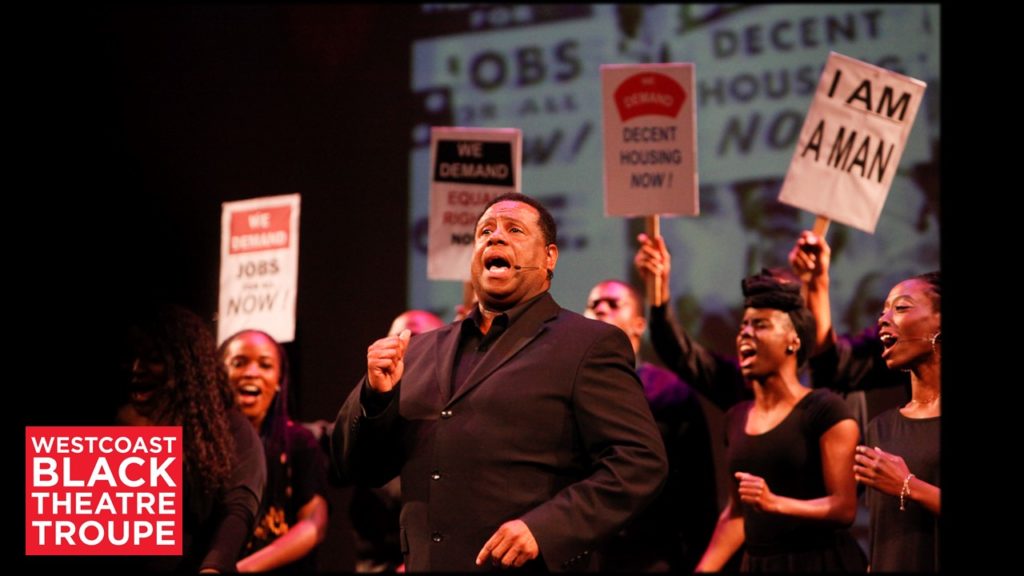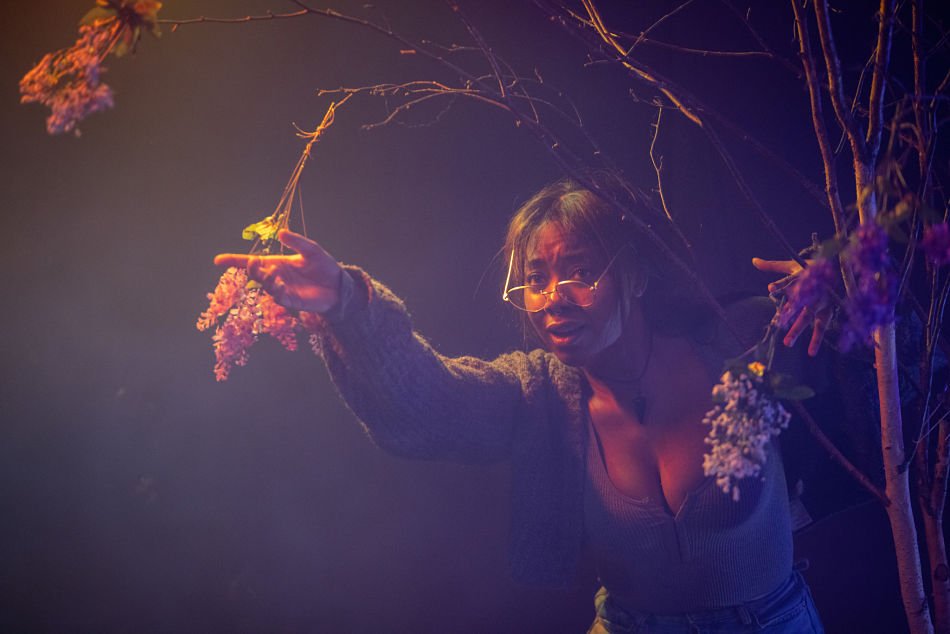Shows postponed or canceled. Heated debates over ventilation systems, the “hygiene theatre” of masking, and whether the promise that everything will be back to normal in a few weeks is a fallacy.
Sound familiar? If you’ve found the last six weeks too reminiscent of March 2020, you’re not alone: Artists and arts administrators across the country have been up to their ears in discussions of budgets and grants, season calendar rearrangements, rights and royalties disputes, and other quotidian but draining tasks, thanks to the surging Omicron variant of COVID-19. With many people triple-vaccinated (and some New York theatres, like Playwrights Horizons and the Public Theater, now requiring audience members to show proof of booster shots at the door), the future may not look as dire as 2020. But the speed and reach of Omicron’s spread has already hampered many holiday plans and January productions. The variant has peaked in some areas, including New York, the Washington, D.C.-area, and Cleveland, but has remained strong throughout the South and is far from its apex in other states. And though peaking is ostensibly good news, it’s hard to reconcile death counts that rival the first wave of the pandemic with the return to normal championed by some restaurants, bars, movie theatres, and performing arts venues.
“It’s pretty flat here in Florida,” Julie Leach (she/her), executive director of Westcoast Black Theatre Troupe in Sarasota, said of the Omicron wave, which is starting to trend downward in the state but is still infecting about 1 in 6 people in Sarasota County as of writing. Westcoast was set to open Ruby, a new musical from founding artistic director Nate Jacobs and his brother Michael Jacobs, earlier this month, but they pushed the opening date to this week, and they’re now pushing it further.
“I felt like putting two more weeks into the rehearsal schedule would give us enough [time] that we could still open,” Leach said, explaining that positive COVID tests in the company of the theatre’s holiday revue affected the Ruby rehearsal process. “I was hoping that Omicron would spike and go down a little more quickly.” The musical, originally set to premiere in the 2019-20 season, follows the life of Ruby McCollum, a Black woman convicted in 1952 of killing a white doctor whom she said had abused her.
Though a testing protocol helped Westcoast weather the Delta variant (along with voluntary vaccinations among staff and artists; the state of Florida forbids the theatre from mandating vaccinations for audience members), Omicron seemed to spread with more force, so the theatre decided to move their Martin Luther King Day celebration online. Ruby has a cast of 20 and at least 10 people working backstage, and Leach said they simply couldn’t keep pushing the show back for an unknown number of weeks at a time. “You start having a domino effect with the rest of your season,” Leach said, a predicament familiar to many other theatres of various sizes.

James Haskins, managing director at the Guthrie Theater in Minneapolis, found himself weighing the odds of moving forward with two productions this year: A Raisin in the Sun, which the theatre will stage later this spring, and Karen Zacarías’s Destiny of Desire, which they canceled earlier this month. The pre-Broadway run of the telenovela-inspired play was set to begin April 30, and “there just wasn’t anywhere in the current season” to move it, Haskins explained, as a production of The Tempest is also set to begin at the end of February. A press release also cited scheduling conflicts among cast members of Destiny of Desire, who are having other upcoming projects delayed or rescheduled due to Omicron. With the current state of the nation’s health, which has forced arts administrators to roll with the punches for almost two years, a licensing agreement may be no match for the simple barrier of the calendar.
While the Guthrie may try to digitally capture A Raisin in the Sun this spring to expand its access to educators and classrooms, Haskins said they’re wary of producing digital theatre that functions mainly to mimic a live event rather than innovate the artform.
“We’ve always been of the mind that if we’re going to engage in virtual content, we want to ensure that it is purpose-made for the virtual space,” Haskins said, adding that the team at the Guthrie believes their audience would prefer the theatre focuses their efforts on a return to in-person performances rather than a pivot to digital. “I think there is a definitely a fatigue with virtual events, but at the same time, I think we’re just going to have to wait a little bit longer.”
For others, a shift to digital, however last-minute, is the only way to survive. Since all three of the major New York arts and theatres festivals that typically take place in January announced they were forgoing in-person programming, only the Exponential Festival has managed to move multiple shows online.
“We had planned for four digital pieces this year and 15 in-person,” producing director Nic Adams (he/him) told me mid-fest. “When we decided to pivot, 11 of our artists decided to adapt their work for digital, eight decided to postpone, and zero decided to cancel.” As previously reported in the Times, the last straw for the Exponential team came when founding artistic director Theresa Buchheister tested positive in December shortly after the team had sent out a survey to gather input from artists on producing in the Omicron environment. While the task of revamping the festival on short notice was daunting—Adams said he only stopped working on Christmas Day—they knew that creating high-quality digital theatre and ensuring that their artists were shown in the best light was well within their capabilities. “We had a playbook from last year,” Adams said. “We probably couldn’t have done it in 10 days had we not done it in 2021.”

Despite the extra work, the Exponential team hasn’t received the same benefits that many of their colleagues have in the wake of the pandemic. The festival did not lose box office revenue due to COVID, instead gaining income from hosting their shows on YouTube and reaching wider audiences than ever, and they were never eligible for the Shuttered Venue Operators Grant (SVOG) that helped many theatres weather virus shutdowns.
“We’re not producers, and we’re not venues—we are presenters, and we’re kind of an artist service organization,” Adams said. “As far as I could tell, in SVOG, there was no lane for that.”
The Guthrie, meanwhile, has continued working with D.C.-based lobbyists for arts and nonprofit relief since the advent of SVOG. And government relief meant that Florida’s Westcoast team did not have to lay off any staff during the pandemic. Exponential, for its part, has reorganized as a 501(c)(3) to take advantage of New York state funding. Everyone I spoke with indicated that they would apply for further federal aid to ease the burden that Omicron has brought, but with midterm elections around the corner, it’s unclear what the future of government relief, let alone arts funding, will look like.
Though audience comfort levels vary across the country along with local government guidelines and case counts, one thing is certain: People want theatre. They will wear their best masks for hours a time to sit in an audience; they will buy exclusive streaming tickets; and they will hype up new productions on social media as much as anyone did in the “before times,” as Haskins called the pre-COVID world. If artists, administrators, and theatregoers can maintain this enthusiasm a little longer—with a healthy dose of financial aid, vaccinations, and time off after exhausting scheduling pivots—we can keep some version of our theatre ecology thriving no matter the variant.
Amelia Merrill (she/her) is a contributing editor at American Theatre. @ameliamerr_


